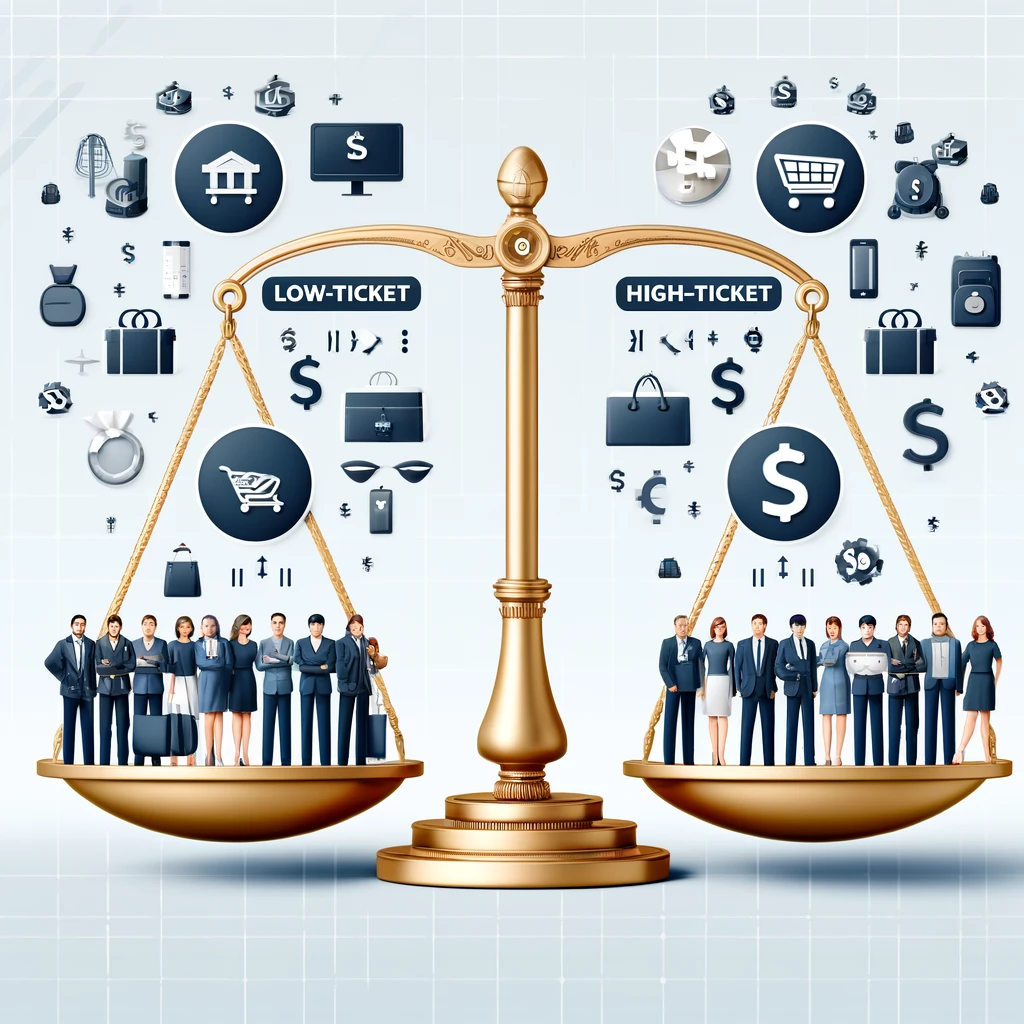
Low Ticket Sales Or High Ticket Sales
Choosing between low-ticket and high-ticket products is a pivotal decision for entrepreneurs and marketers. Each has unique advantages and challenges that shape your advertising efforts, customer base, and overall strategy. This article explores these distinctions in depth, with actionable insights to help you determine the best fit for your business.
What Are Low-Ticket Products?Low-ticket products are those priced affordably, typically under $50. They cater to a broad audience, often appealing to impulse buyers.
Advantages of Low-Ticket Products
- Broader Reach: Affordable pricing attracts a larger audience, increasing the potential for frequent sales.
- Faster Sales Process: Buyers tend to make quicker decisions on low-cost items.
- Gateway to Upselling: These products can serve as an introduction, leading to higher-priced offerings later.
- Scalable Advertising: Low-ticket items can often perform well with simple, low-cost ad campaigns.
Challenges of Low-Ticket Products
- Smaller Profits: Lower margins mean you need high sales volume to generate significant income.
- High Competition: The lower barrier to entry often leads to a crowded market.
- Increased Workload: Managing a large customer base can become time-intensive.
What Are High-Ticket Products?
High-ticket products are premium offerings priced at $500 or more. These products promise exceptional value, exclusivity, or transformation.
Advantages of High-Ticket Products
- High Revenue per Sale: Each sale contributes significantly to your bottom line, requiring fewer transactions to reach your goals.
- Perceived Value: Higher prices often convey better quality, attracting more committed buyers.
- Stronger Customer Relationships: Buyers investing in premium products are typically more engaged, fostering loyalty and repeat business.
- Flexibility in Advertising: Higher margins allow for a more robust ad budget.
Challenges of High-Ticket Products
- Narrower Market: The audience is more niche, requiring targeted marketing efforts.
- Longer Sales Cycle: Buyers take more time to evaluate premium purchases, necessitating trust-building strategies.
- Higher Expectations: Customers demand exceptional quality and service for their investment.
Advertising Strategies: Low-Ticket vs. High-Ticket
Your advertising approach will differ significantly based on the type of product you’re promoting.
For Low-Ticket Products
- Best Platforms: Leverage high-traffic platforms like Facebook Ads, Instagram, and Google Ads.
- Messaging: Focus on quick benefits and urgency, such as limited-time offers or discounts.
- Funnels: Use simple, streamlined funnels to minimise friction and encourage fast conversions.
- Budgeting: Start with modest budgets and scale as you find winning campaigns.
For High-Ticket Products
- Best Platforms: Platforms like LinkedIn, YouTube, and webinars work well for showcasing premium value.
- Messaging: Emphasize the transformative impact of the product, exclusivity, and ROI.
- Funnels: Implement multi-step funnels with lead magnets, nurturing emails, and personal consultations.
- Budgeting: Be prepared to invest more in acquiring high-quality leads.
Low-Ticket vs. High-Ticket: A Comparison Table

How to Decide: Low-Ticket or High-Ticket?
1. Assess Your Goals
- If your aim is to scale quickly with high sales volume, low-ticket products might be the better choice.
- If you prefer fewer transactions with larger payouts, high-ticket products offer more sustainable income.
2. Consider Your Resources
- Low-ticket products require robust systems to handle volume efficiently.
- High-ticket products demand time and effort to build trust and nurture leads.
3. Know Your Audience
- Are your customers more likely to prioritize affordability or premium value? Understanding their mindset is key.
4. Evaluate Your Preferences
- Do you thrive in high-energy environments with quick wins? Or do you prefer deeper, more meaningful relationships with fewer customers?
Conclusion: Find Your Fit
Low-ticket and high-ticket products both have their place in a successful business strategy. Your choice depends on your goals, audience, and resources. You might even find value in combining both approaches, using low-ticket products to attract new customers and high-ticket offerings to maximise revenue.
Now it’s your turn: Are you leaning toward low-ticket or high-ticket products? Share your thoughts in the comments or get started today by exploring your options.
The path to success begins with a clear decision—and the right strategy to match.
We have a free report giving details on a low ticket item with master resell rights which means that it is a product ready for you to take to market, Get the Free Report By Clicking Here
